
Does your rug look too small in your living room? Is your chandelier hanging too high (here’s how you know)? If so, there are some simple rules of proportion and placement used in interior design that can make your living room just feel right. All the rules and measurements are centered around human ergonomics and will result in a harmonious space and solve issues such as catching your chair leg on your area rug.
Key dimensions to have handy when space planning your living room

1. Size of Area Rug
The correct size will create a comfortable conversation grouping. An area rug in a living room should be large enough so that at least all of the front legs of all the furniture pieces are on the rug. Ideally, all the legs will sit on the rug but rug sizes vary, as do budgets. In a perfect world, your furniture would appear to be sitting on an island of carpet so go as big as you can. Leave 18 inches of flooring between the edge of the rug and the wall, as this will bring attention to the centre of the room.
2. Size of Side Tables
When choosing side tables, select a pair that match the height and depth of your sofa arms. This does not need to be exact, but as closely as possible. For best fit, they be about 3 inches shorter than the sofa arm. and be within 2 inches of the arm height so it is easy to reach over the arm to set a drink down.
3. Distance from Sofa to Coffee Table

The coffee table should be around 17 inches high which is slightly lower than the height of a standard seat height. Standard placement is to position the coffee table 18 inches from the sofa and accent chairs, this way the table can be easily reached from a seat position but also allows enough leg room. We often cheat this a bit – I don’t mind it as close as 12″ so it is within easy reach.
Keep in mind that round or square tables best suit a square furniture grouping and oval or rectangular for a rectangular furniture grouping. Don’t overlook the option of grouping a couple of smaller tables together if you can’t find the exact size you want.
4. Artwork Placement
When placing artwork behind a sofa, the artwork should take up wall space that is equal to one half or two thirds of the sofa’s total length. You can choose to hang an individual piece landscape oriented or a grouping of pieces with 2-3 inches between each frame. Make sure that the bottoms of the frames are 6-10 inches from the top of the sofa – this will create a visually cohesive grouping.

5. Accent Chairs
Select accent chairs that are well proportioned. Roughly one third of the length of the sofa will look right (depending on your sofa length). This will create some balance in your living room and encourage conversation. Either place two matching chairs together or place each chair on opposite ends of the coffee table. You will still achieve a conversation grouping, while allowing space to walk around.
6. Distance from TV to Sofa

This distance will vary depending on the size of your living room and quality of television. A good rule of thumb is to keep the distance 1.5 times the diagonal measurement of the television screen. This measurement could apply to all seats in the living room, but you could apply this to where you sit the most.
7. Height of TV
To ensure the most comfortable viewing position television height is key. People seated in the living room should ideally be looking straight at the television without straining their necks. The best height for wall mounted televisions is to mount the center of the television screen 30 inches above the lowest seat height in the living room. If you have your television mounted over the fireplace, I’ve written some great ways to disguise your television in another post.
8. Walkways
Plan to allow about 36″ between large furniture pieces where there is a path or walkway for ideal spacing. If there is a pathway through the room to an outside door, or to pass from room to room, this is where to allow for this. We don’t all have ideal space, so for a smaller room, aim for at least 24”.
So here are some essential numbers to get you started:
40″(min) to 108″ (max): the distance across which a comfortable conversation grouping should be arranged. Measure from the middle of one seat across the seating cluster to the middle of another seat. This captures the distance from the face of one seated person across to the face of another in conversation.
24″ to 36″: The distance needed for a pathway through a room. This is the space between a piece of furniture and an adjacent wall. Although you might be able to slip through a narrower space the room will look awkwardly crowded.
36″: typical width of an armchair
12″ to 18″: Typical distance between the front of a sofa and the coffee table.
16″ to 18″: typical coffee table height.
With these key numbers in mind, you will be all set to space plan your room.










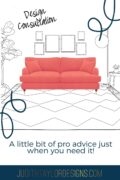

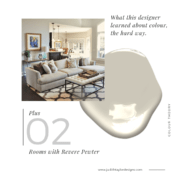
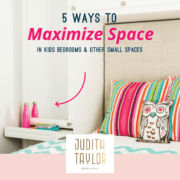



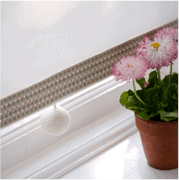


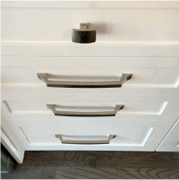
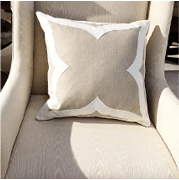

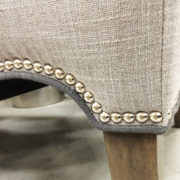
This is a great article on space planning for living rooms! I especially like your tips on using ergonomic principles to create a comfortable and harmonious space. I’m also interested in learning more about how loft boarding can be incorporated into living room design to create additional storage and functionality. Have you ever written about this topic?
Buttercream, now doesn’t’ that sound just lovely!
I not only have a fireplace not centered in rectangular shape livingroom, next to it on left is tv on a console then there’s a patio door. Almost kiitycorner of patio door is the opening to livingroom…. I am tired of having the couch along the opposite wall of fireplace & tv…..with two large recliners close to patio door….help!
Well that DOES sound like a space planning challenge. Feel free to reach out if you want help with that. We get pretty creative with ideas builders leave for us to solve.